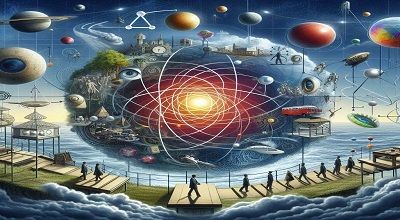Symbolic Interaction Perspective
The Symbolic Interaction Perspective is a sociological framework. That focuses on the ways in which individuals create and interpret symbols to communicate. Make sense of the world around them. It emphasizes the importance of symbols, language, and social interactions in shaping human behavior and society. This perspective is often associated with the work of sociologist George Herbert Mead.
Connecting the Symbolic Interaction Perspective to a physics curriculum might involve exploring how individuals, within the context of a physics class, create and interpret symbols related to the concepts and principles of physics. Here are a few ways in which this connection could be explored:
Language and Symbols in Physics
- Investigate how students and teachers use language and symbols to communicate and understand physics concepts.
- Explore the role of symbols in representing physical quantities, equations, and relationships within the field of physics.
Group Dynamics and Collaborative Learning
- Analyze how students interact within groups or during class discussions to construct meaning. And understanding of physics concepts.
- Consider how the sharing of symbols and language within a group influences individual and collective learning experiences.
Identity and Participation in Physics
- Examine how individuals develop a sense of identity as “physics learners” and how this identity influences their interactions with the subject matter.
- Explore how stereotypes and societal perceptions of who is considered a “typical” physics student might impact students’ engagement and performance.
Social Construction of Knowledge in Physics
- Investigate how knowledge is socially constructed within the physics community and how this influences the learning experiences of individuals.
- Explore the role of symbolic interaction in shaping the development of scientific knowledge and theories.
Symbolic Representations in Physics Education
- Analyze the use of diagrams, graphs, and other symbolic representations in teaching and learning physics.
- Consider how different individuals may interpret and use these representations based on their backgrounds, experiences, and symbolic understandings.
Communication of Physics Concepts
- Explore how teachers communicate physics concepts and how students interpret and construct meaning from these communications.
- Consider the impact of different teaching methods on students’ symbolic interactions with physics content.
Summary
By incorporating the Symbolic Interaction Perspective into the analysis of a physics curriculum, educators and researchers can gain insights into the social processes. Which individuals engage with and make sense of physics concepts. This perspective encourages a focus on the dynamic and interactive nature of learning physics. Acknowledging the role of symbols and social interactions in shaping the construction of knowledge.
